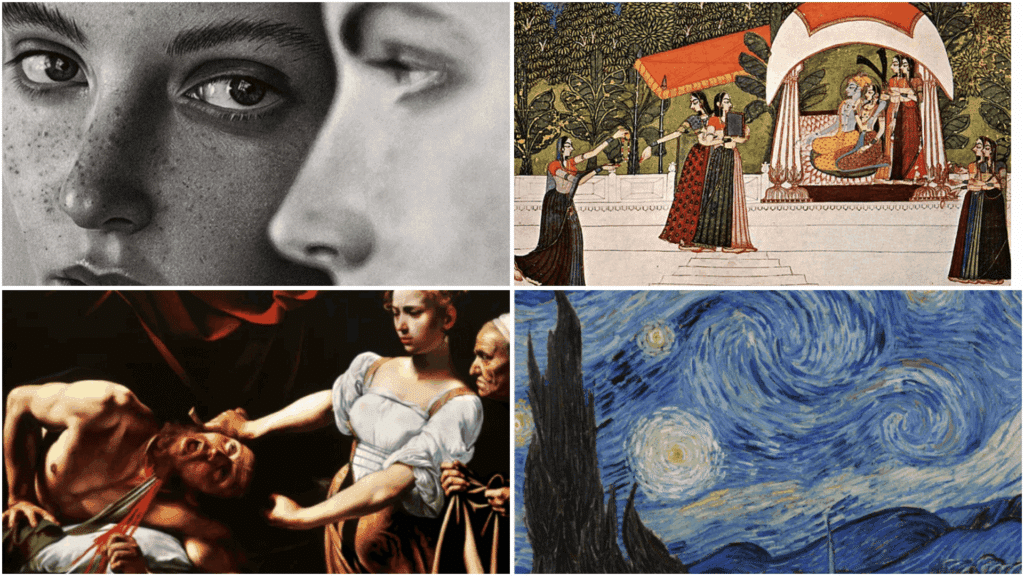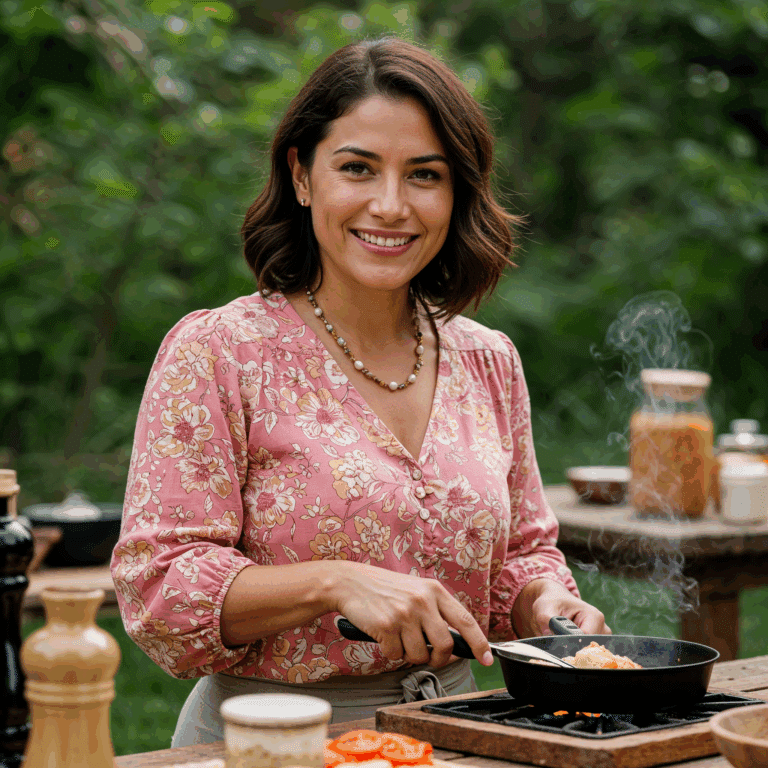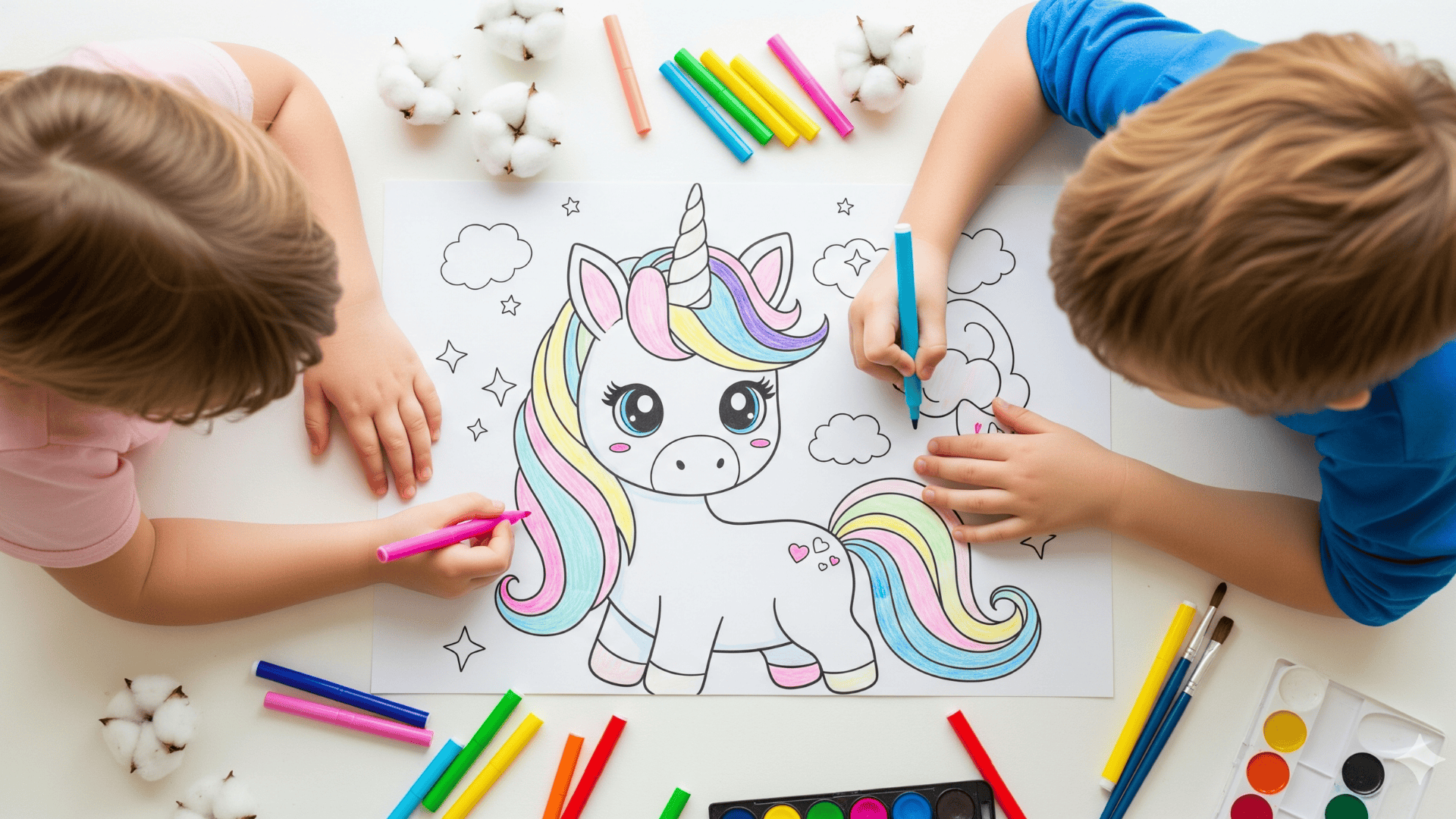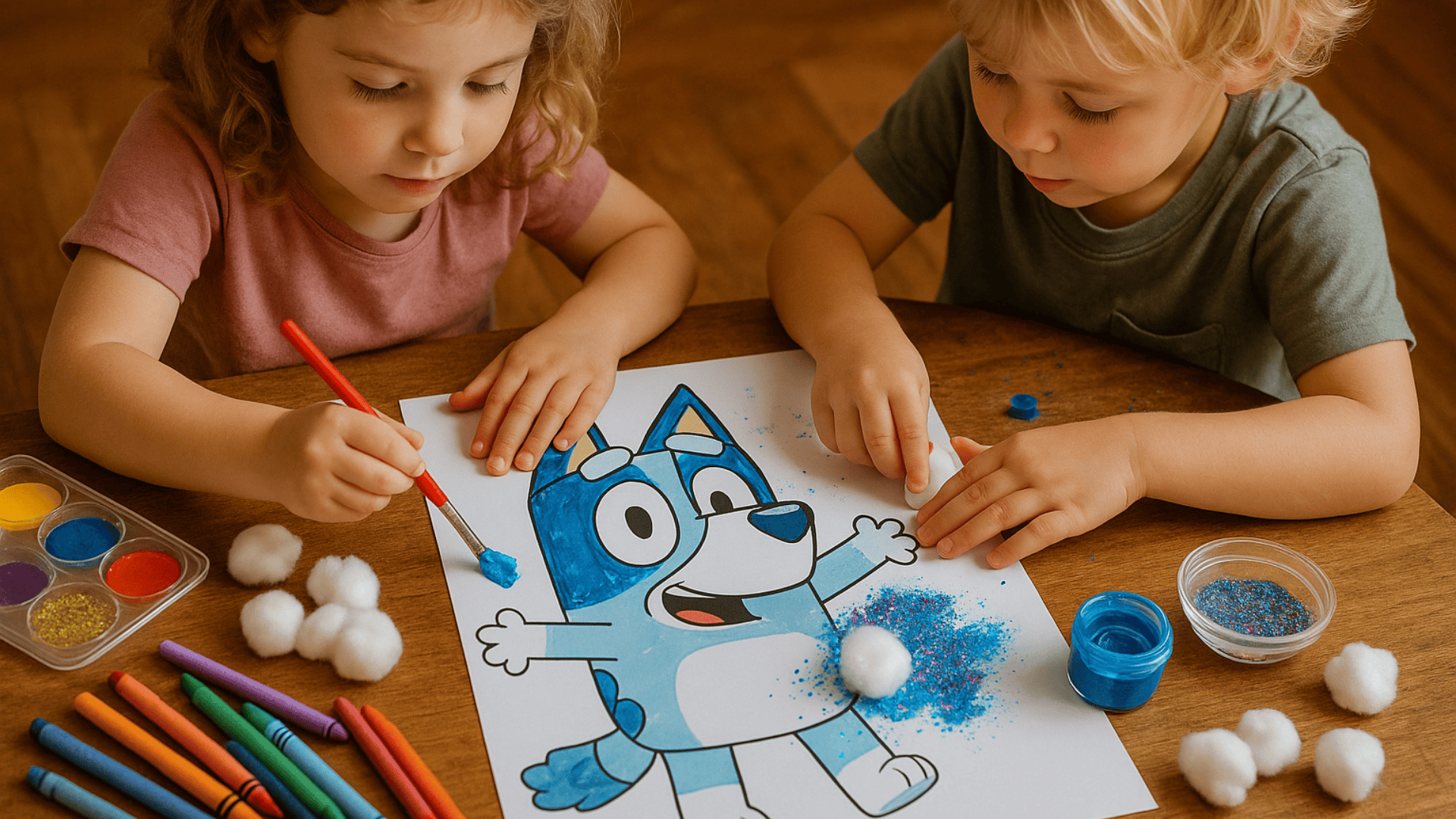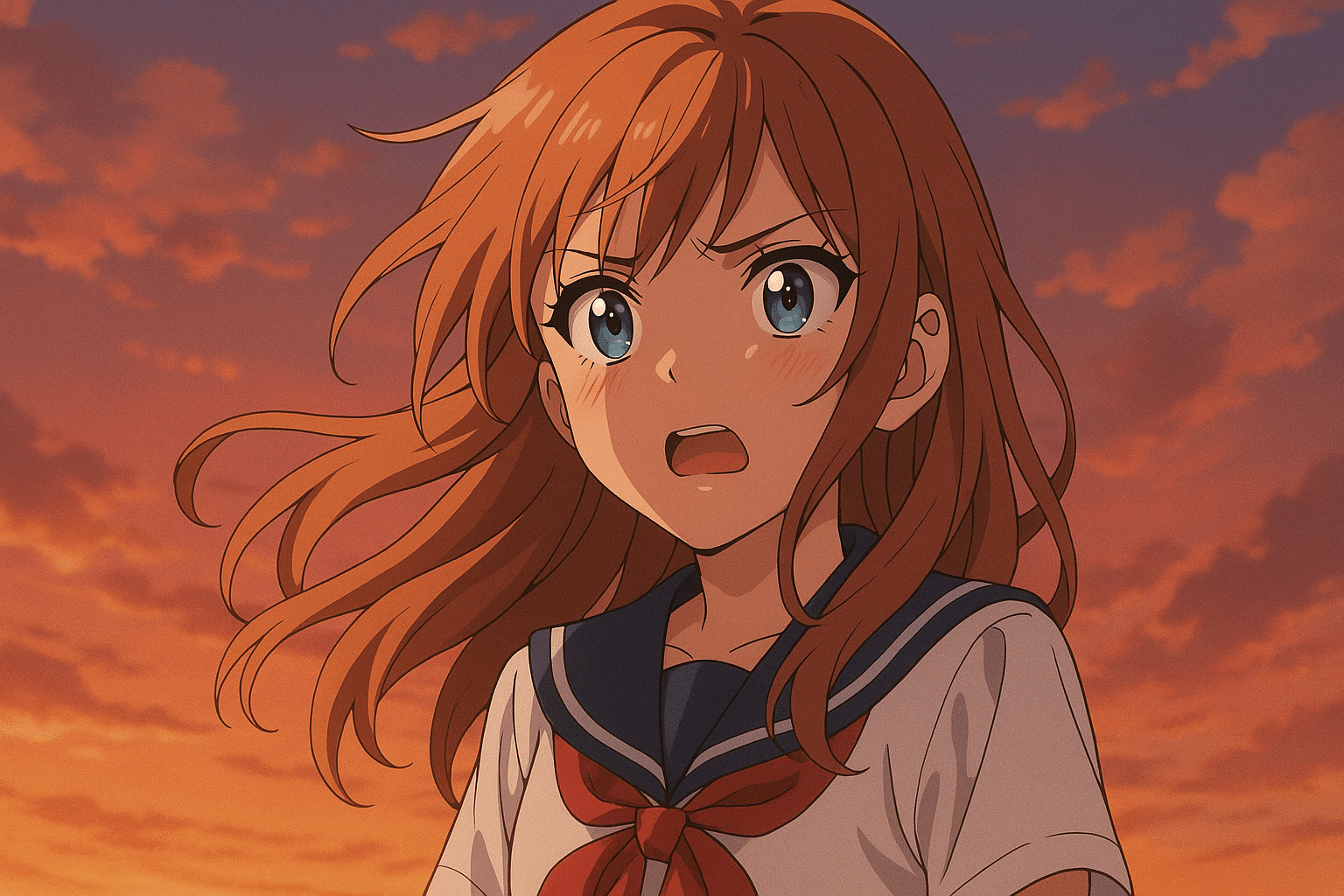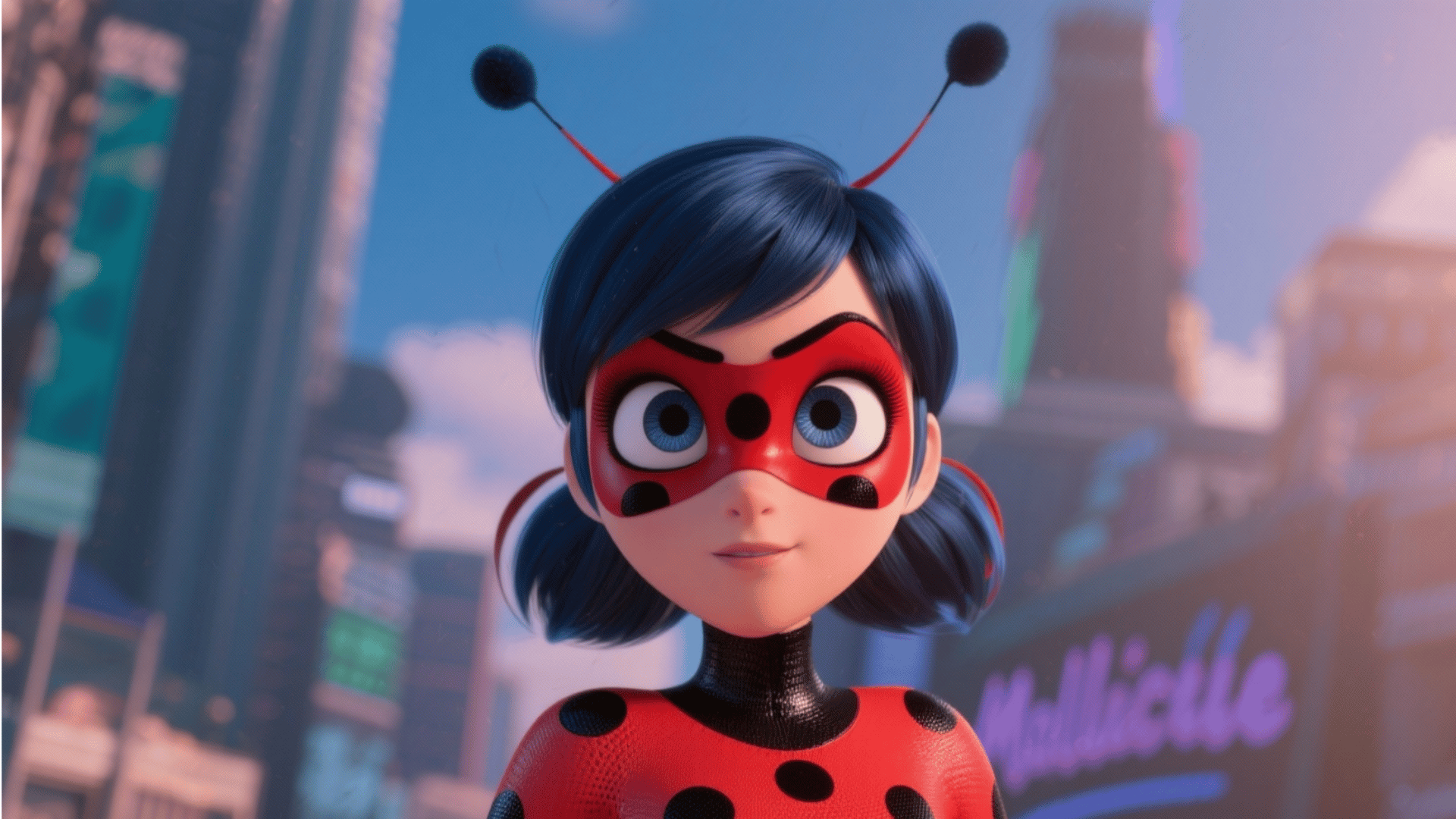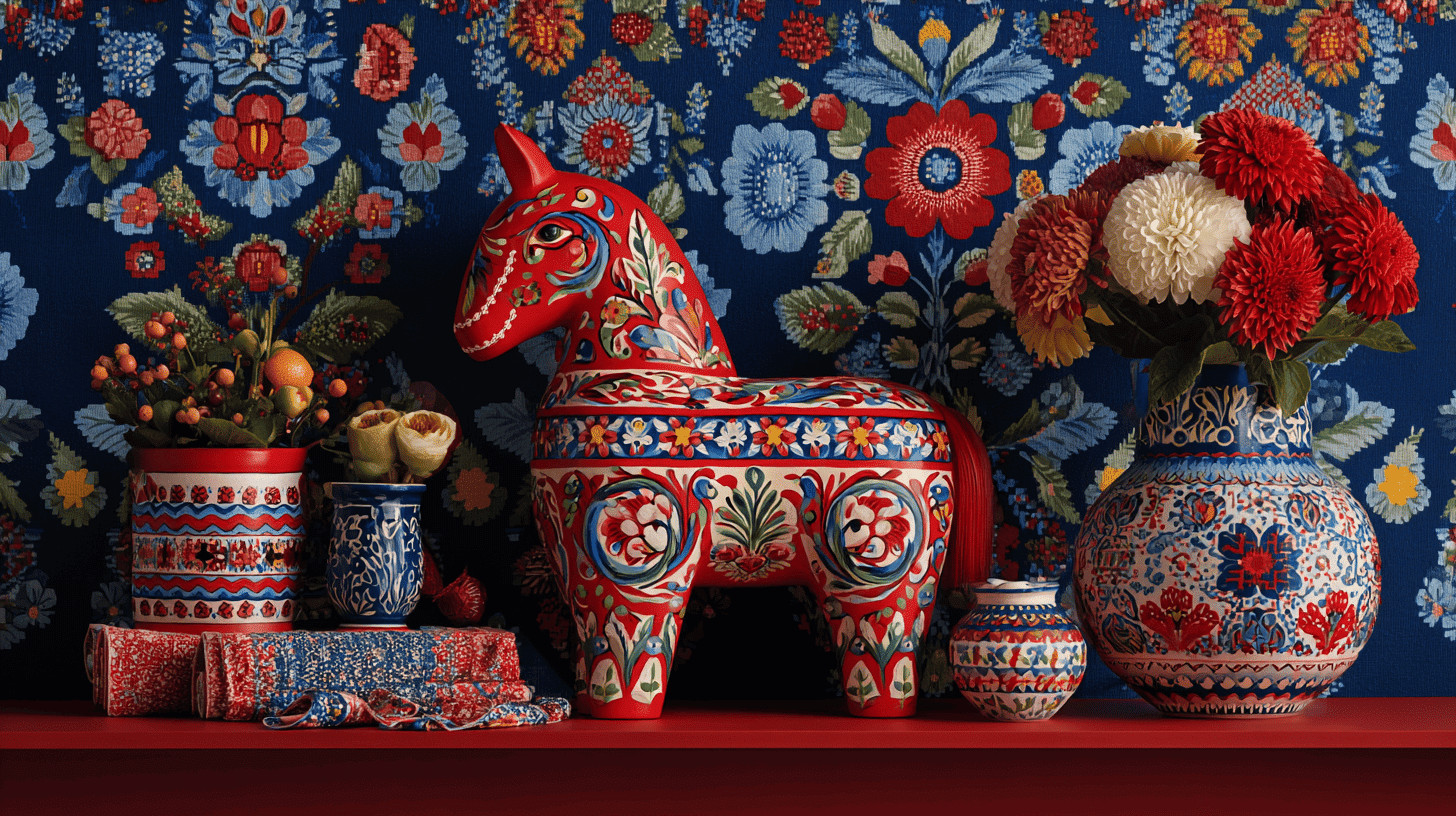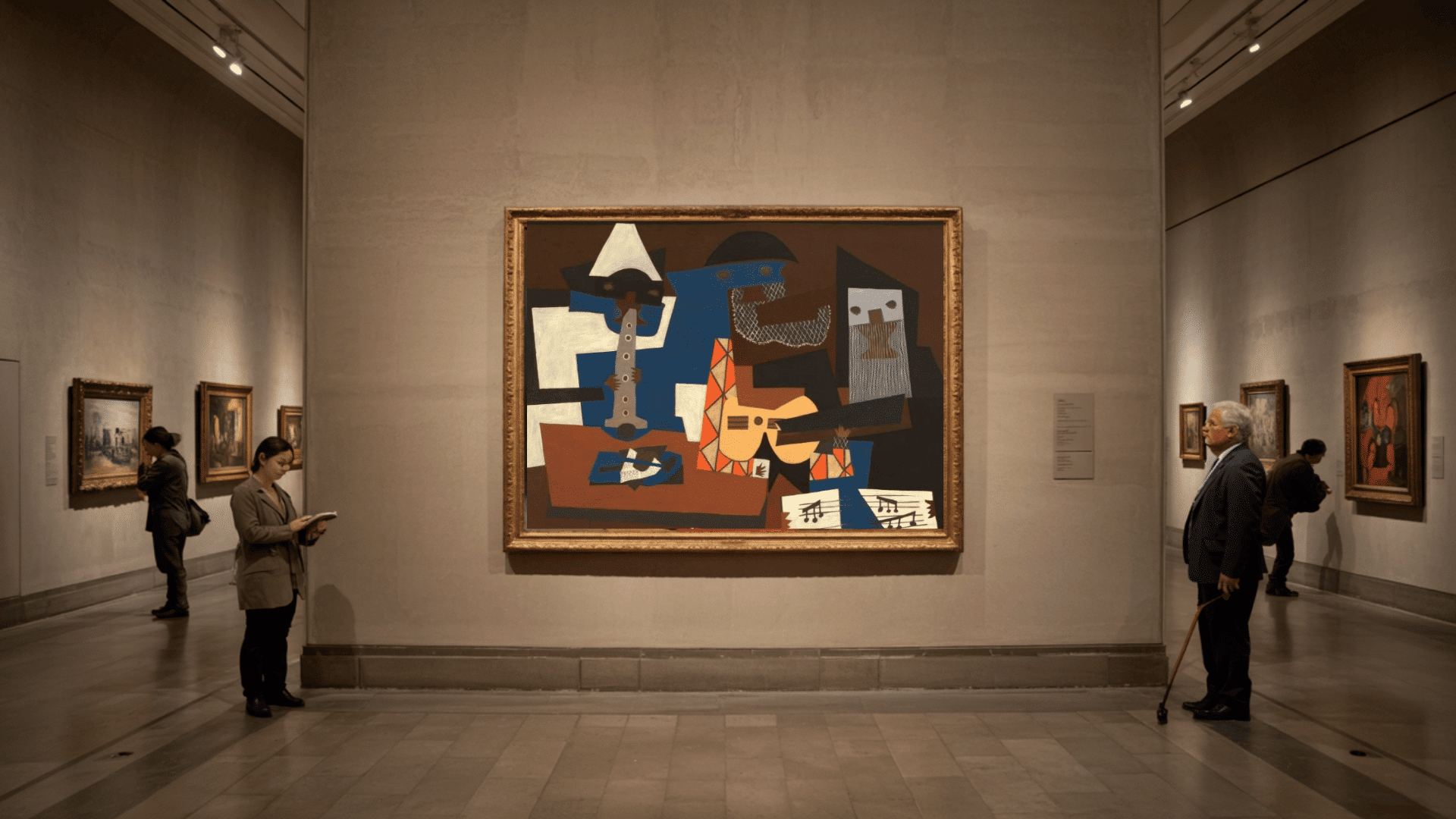Have you ever wondered why some paintings look completely different from others? The answer lies in the amazing world of painting styles!
From ancient cave drawings to modern digital art, artists have developed countless ways to express their ideas and emotions through paint, each style telling unique stories about its time, culture, and creator.
Jackson Pollock famously created his drip paintings by dancing around huge canvases on his studio floor, literally making art move!
From Picasso’s cubism to Van Gogh’s swirls to hyperrealism, learning styles deepen appreciation; each emerged through centuries of experimentation, rebellion, and innovation.
What Do We Mean by “Painting Style”?
Have you ever wondered why some paintings look so different from others? The secret lies in something called “painting style.”
- Painting style: is an artist’s unique way of creating art. It shows whether colors are bright or dull, lines are smooth or rough, and whether paintings look realistic or imaginary.
- Technique: is different – it’s the actual skills artists use, like brush handling or color mixing. Style refers to the appearance of the final artwork.
- Art movements: occur when many artists paint similarly during the same time period, like the Impressionists who painted outdoors with quick brushstrokes.
Art keeps evolving, but its heart stays the same, a powerful way to share stories, feelings, and visions across time and space.
Historical Evolution of Painting Styles
Art styles didn’t just appear randomly – they evolved over thousands of years. Each new style often emerged as artists rebelled against or improved upon what came before.
| Time Period | Style | Key Features | Reaction To |
|---|---|---|---|
| Ancient-1400s | Classical/Medieval | Religious themes, flat figures | Ancient realism |
| 1400s-1600s | Renaissance | Realistic humans, perspective | Medieval flatness |
| 1600s-1700s | Baroque | Drama, movement, emotion | Renaissance calmness |
| 1800s-1900s | Modern | Bold colors, new perspectives | Traditional realism |
| 1900s-now | Contemporary | Mixed media, concepts | Single art styles |
This pattern of artistic rebellion continues today. Artists constantly push boundaries, creating tomorrow’s art movements by challenging today’s accepted styles.
Classical & Renaissance Painting Styles
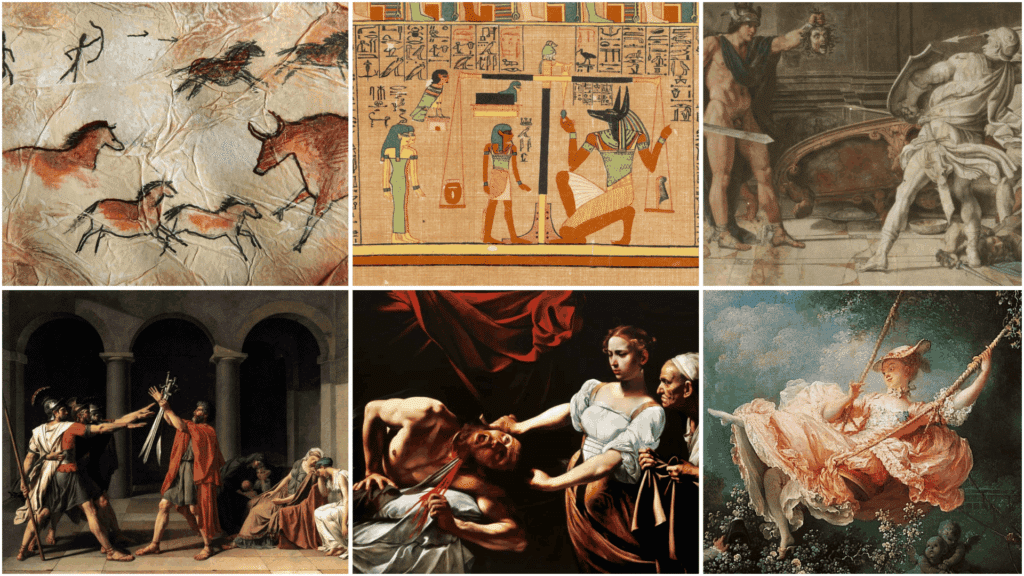
Art history begins with humanity’s earliest creative expressions and evolves through grand civilizations. These foundational periods established techniques and themes that still influence artists today.
1. Cave Art
The earliest known paintings were created 40,000 years ago on cave walls. Ancient humans used natural pigments to depict animals, hunting scenes, and handprints, showing humanity’s first artistic impulses and storytelling through visual images.
2. Egyptian Painting
Highly stylized art has followed strict rules for over 3,000 years. Figures shown in profile with frontal torsos, hierarchical scaling based on importance, and symbolic colors. Created primarily for tombs and temples to ensure safe passage to the afterlife.
3. Roman/Greek Painting
Classical antiquity emphasized realistic human forms, mathematical proportions, and three-dimensional perspective.
Greeks perfected idealized beauty while Romans added portraiture and narrative scenes. These civilizations established artistic principles that dominated Western art for centuries.
4. Renaissance
The “rebirth” of classical ideals (1400s-1600s) brought scientific perspective, anatomical accuracy, and humanism. Artists like Leonardo da Vinci and Michelangelo combined technical mastery with intellectual curiosity, creating some of the most celebrated masterpieces in history.
5. Baroque
Dramatic, emotional art movement (1600s-1700s) featuring bold contrasts, movement, and theatrical lighting. Artists like Caravaggio employed intense shadows and highlights to create powerful religious and mythological scenes that directly engaged viewers’ emotions.
6. Rococo
Graceful, decorative style (early 1700s) characterized by soft colors, curved lines, and romantic themes. Popular among the French aristocracy, it featured playful subjects, ornate details, and asymmetrical designs that emphasized beauty and pleasure over serious themes.
7. Neoclassicism
Return to classical Greek and Roman ideals (late 1700s-early 1800s), emphasizing order, symmetry, and moral virtue. Artists like Jacques-Louis David created heroic historical scenes with clear lines and noble subjects, rejecting the frivolity of Rococo.
8. Romanticism
Emotional, individualistic movement (late 1700s-mid 1800s) that celebrated nature, passion, and imagination. Artists like Delacroix used bold colors and dramatic compositions to express feelings and sublime experiences, opposing Neoclassicism’s rigid rationality.
These movements laid the groundwork for all future artistic development. Each period’s innovations and rebellions shaped the rich tapestry of art history we study today.
19th-Century & Early Modern Painting Styles
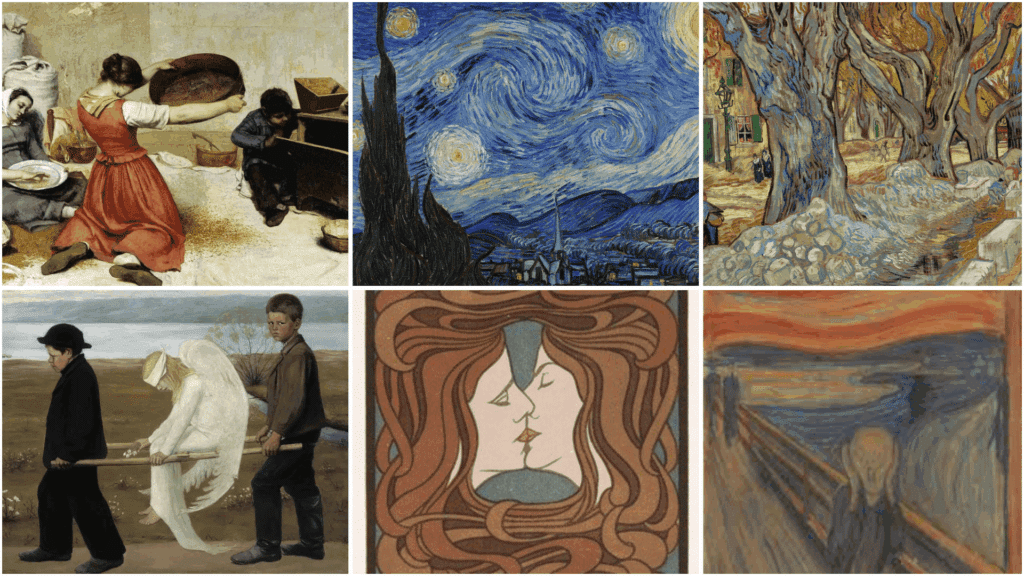
The 19th century marked a dramatic shift as artists began rejecting academic traditions and seeking new ways to express modern life. These movements laid the foundation for all contemporary art that followed.
9. Realism
The mid-1800s movement rejected romantic idealization to show ordinary life truthfully.
Artists like Gustave Courbet painted peasants, workers, and everyday scenes with honest detail, believing art should reflect social reality rather than escape it.
10. Impressionism
Revolutionary French movement (1870s-1880s), capturing fleeting light and atmosphere with loose brushstrokes
Monet, Renoir, and others painted outdoors, using bright colors and broken brushwork to show how light changes throughout the day.
11. Post-Impressionism
Diverse artists (1880s-1900s) who built upon Impressionism while adding personal expression and symbolic meaning.
Van Gogh’s emotional brushwork, Gauguin’s bold colors, and Cézanne’s geometric forms laid the groundwork for modern art’s development.
12. Symbolism
The late 1800s movement emphasized dreams, emotions, and spiritual themes over realistic representation.
Artists like Gustave Moreau used mythological subjects and mysterious imagery to express inner psychological states and abstract ideas through symbolic content.
13. Art Nouveau / Jugendstil
International decorative style (1890s-1910s) featuring flowing lines, natural forms, and ornamental patterns.
Applied to architecture, posters, and decorative arts, it emphasized organic shapes inspired by plants, flowers, and curved forms.
14. Expressionism
The early 1900s German movement prioritized emotional expression over realistic appearance.
Artists like Ernst Ludwig Kirchner used distorted forms, aggressive brushwork, and intense colors to convey psychological states and critique modern industrial society’s alienation.
These pivotal movements altered art from traditional representation into modern expression. They established the principle that art should reflect the artist’s inner vision rather than merely copy external reality.
Early to Mid-20th Century Painting Styles
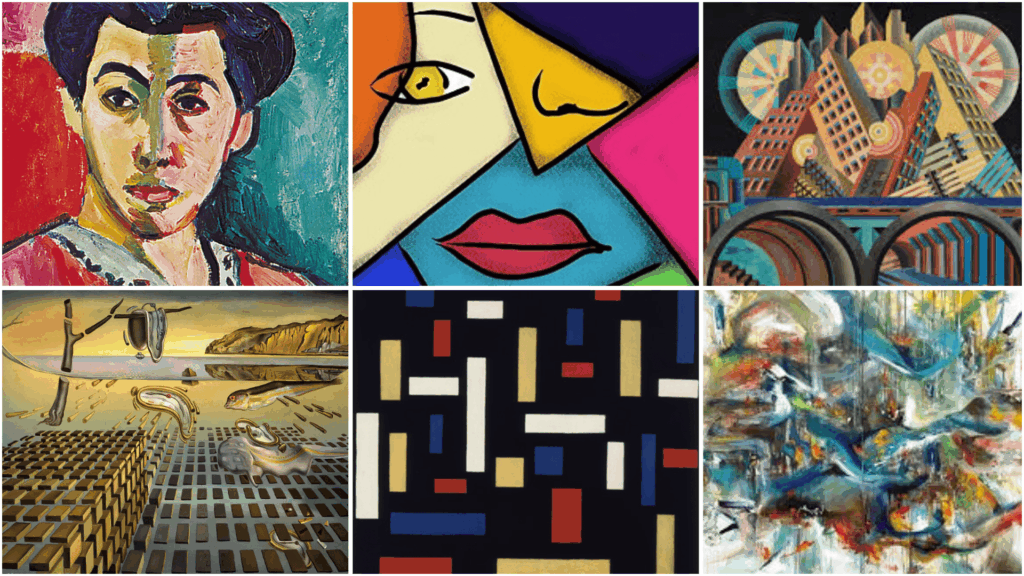
The early 1900s were marked by artistic experimentation as artists abandoned traditional representation. These radical movements redefined what art could be, creating entirely new visual languages that shocked and inspired the world.
15. Fauvism
The early 1900s French movement used wild, non-naturalistic colors for emotional impact.
Led by Henri Matisse, the Fauves (“wild beasts”) painted with pure, unmixed pigments, prioritizing color’s expressive power over realistic representation of natural subjects.
16. Cubism
Revolutionary style (1907-1920s), fragmenting objects into geometric shapes and showing multiple viewpoints simultaneously.
Picasso and Braque created analytical and then synthetic cubism, fundamentally changing how artists represented three-dimensional reality on flat surfaces.
17. Futurism
The Italian movement (1909-1944) celebrated speed, technology, and modern industrial life.
Artists like Umberto Boccioni employed dynamic lines and fragmented forms to capture movement and energy, thereby rejecting the static quality of traditional art.
18. De Stijl
Dutch movement (1917-1931) promoting pure abstraction through geometric forms, primary colors, and straight lines.
Led by Piet Mondrian, artists sought a universal visual language using only horizontal/vertical lines, as well as red, blue, and yellow color schemes.
19. Surrealism
Movement (1920s-1940s) exploring dreams, the unconscious mind, and automatic creation.
Artists like Salvador Dalí and René Magritte created bizarre, dreamlike images that combined realistic techniques with impossible, fantastical subject matter and psychological symbolism.
20. Abstract Art
A general term for non-representational art focusing on color, form, and composition rather than recognizable subjects.
Artists like Wassily Kandinsky pioneered pure abstraction, believing art should express spiritual and emotional truths through visual elements alone.
21. Action Painting
American style (1940s-1950s), emphasizing physical gesture and the spontaneous creation process.
Jackson Pollock’s drip paintings and Willem de Kooning’s energetic brushwork made the act of painting itself the subject of the artwork.
22. Abstract Expressionism
Post-World War II American movement combining abstract art with emotional expression.
This umbrella term includes both gestural action painting and color field painting, establishing New York as the new international center of the art world.
These movements transformed art, demonstrating that it could create new visual experiences that evoke emotions and imagination, rather than merely replicating reality.
Mid- to Late-20th Century Painting Styles
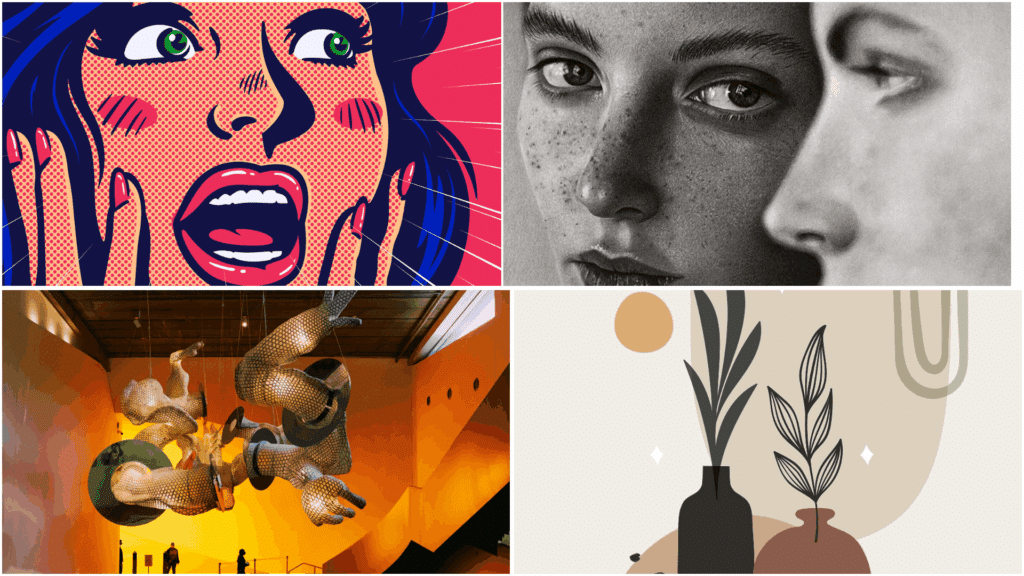
The latter 20th century saw art respond to mass media, consumer culture, and changing social values.
Artists embraced both popular imagery and radical simplicity, expanding art beyond traditional gallery spaces into the wider world.
23. Pop Art
1960s movement incorporating popular culture imagery and commercial techniques.
Andy Warhol’s soup cans and Marilyn prints, along with Roy Lichtenstein’s comic-inspired works, blurred boundaries between high art and mass culture, celebrating consumer society.
24. Minimalism
1960s-1970s movement emphasizing simplicity, geometric forms, and industrial materials.
Artists like Donald Judd and Dan Flavin created spare, repetitive sculptures using steel, glass, and fluorescent lights, reducing art to essential elements without emotional expression.
25. Photorealism
1960s-1970s style, creating paintings that closely resembled photographs.
Artists like Chuck Close and Richard Estes employed meticulous techniques to reproduce photographic imagery, thereby questioning the relationship between painting, photography, and reality with precise detail.
26. Land Art / Installation Art
Movement (1960s-present,) creating art in natural landscapes or changed entire spaces.
Robert Smithson’s “Spiral Jetty” and Christo’s wrapped buildings expanded the boundaries of art, moving it beyond galleries to incorporate earth, architecture, and the environment as artistic materials and subjects.
These movements democratized art and expanded its boundaries beyond traditional limits. They showed that art could engage with everyday life, question reality itself, and change any space into an artistic experience.
Global & Technique-Focused Painting Styles
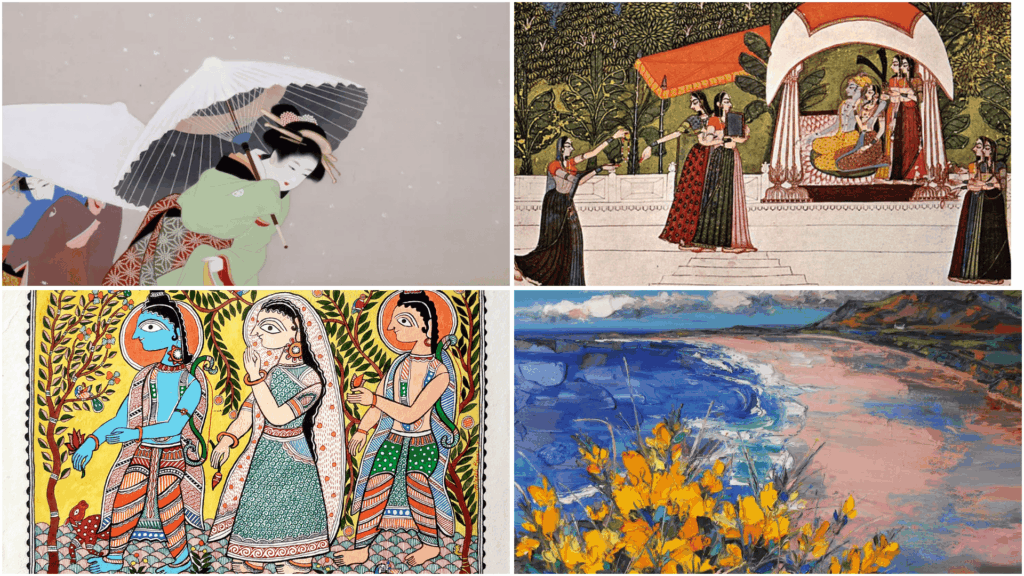
Art extends far beyond Western traditions, encompassing rich cultural practices from around the world.
These diverse styles showcase unique techniques, materials, and philosophical approaches that have developed over centuries across different civilizations.
27. Nihonga
Traditional Japanese painting style uses natural pigments, silk, and paper.
Artists blend mineral colors with animal glue binder, creating luminous works that emphasize seasonal themes, nature, and spiritual harmony through delicate brushwork and subtle gradations.
28. Rajput Painting
Indian court art tradition (16th-19th centuries) featuring vibrant colors, intricate details, and mythological themes.
Artists depicted Hindu epics, royal portraits, and romantic stories using bold outlines, flat color areas, and decorative patterns on paper and cloth.
29. Madhubani (Mithila Folk Art)
Ancient Indian art form from Bihar featuring geometric patterns, nature motifs, and religious symbolism. Women artists use natural pigments to create intricate designs on walls and paper, passing down techniques through generations with distinctive line work.
30. Impasto
Painting technique applying thick layers of paint with visible brushstrokes or palette knife marks.
Artists like Van Gogh used heavy paint application to create texture, dimension, and emotional intensity, making the physical paint itself part of the artwork’s expression.
31. Street Art / Contemporary / Mixed Media
Current diverse practices combine traditional and digital techniques, found materials, and public spaces.
Artists use spray paint, stencils, installations, video, and social media to address contemporary issues, creating art accessible to broader audiences beyond galleries.
These global and technical approaches remind us that artistic expression knows no boundaries.
Each culture and technique offers unique insights into human creativity, demonstrating that art is indeed a universal language that transcends borders and time.
Practical Applications and Modern Relevance
Understanding painting styles isn’t just about memorizing art history; it’s a practical skill that enriches your life today.
If you’re creating art, collecting it, or simply appreciating it, knowing different styles opens up exciting possibilities.
- For Beginning Artists: Experiment with different techniques, such as Impressionist brushstrokes or Cubist geometric shapes, to discover your unique artistic voice and develop essential skills.
- For Art Collectors: Learn to recognize authentic techniques to avoid fake paintings and build diverse collections that tell stories across different time periods and cultures.
- For Students: Art styles teach history, develop critical thinking skills, and help you understand how different cultures express creativity and emotions through visual art.
- For Art Enthusiasts: Recognizing styles makes museum visits more engaging and helps you appreciate the techniques and cultural context behind famous masterpieces.
- For Everyone: Understanding art styles connects you to thousands of years of human creativity, offering new ways to see and interpret the world around you.
Learning about painting styles connects you to thousands of years of human expression. Start exploring today, your artistic venture awaits revelation!
Final Brushstroke
Learning about different types of painting styles is like discovering a secret code that unlocks the mysteries of art history.
From realistic portraits to abstract splashes of color, each painting style represents humanity’s endless creativity and desire to express emotions, tell stories, and capture beauty in unique ways.
If you’re planning to become an artist, collect paintings, or simply want to impress friends at museums, understanding these diverse painting styles enriches your appreciation for art.
Art is a living conversation, every stroke builds on the past while shaping something new, reminding us that creativity has endless forms of expression.
Ready to start your artistic venture? Pick up a brush and discover which painting style speaks to your soul!

